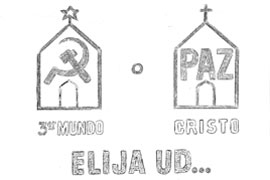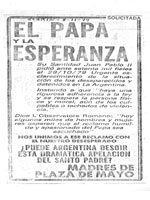(D10) Between the Support for Authoritarian Regimes and the Defence of Human Rights: The Catholic Church in Chile and Argentina during the Military Dictatorships of the 1970s and 1980s

When a state legitimates its use of violence against its opposition with an ideology that, among other aspects, refers to the religious character of the nation, this raises questions about the relationship between church and state and between religion and violence. From the 1960s to the 1980s, the Catholic Church in many Latin American countries found itself caught between traditional support for state authorities and its condemnation of human rights violations. In Chile, for example, the church became an important pillar of the opposition against the military junta. In Argentina, however, the church hierarchy supported the military dictatorship. A comparison of the varying political tendencies of the Catholic Church within authoritarian regimes, while understanding the church to be a set of complex social networks embedded within a society, can reveal how a religious institution could become bound primarily to the defence of peace, on the one hand, and support state violence, on the other.

At present, studies that analyse the conduct of the church within military regimes focus mostly on actions of the church hierarchy. In contrast, this proposed study proceeds from the understanding that the church hierarchy could not and did not act on its own. Rather, the religious hierarchy was bound to all of its church members. Thus, to understand the complex relationships between the different levels of church membership, the concept of hegemony will be deployed. Though the primary duty of the secular clergy, regular orders and laity was to obey the rules emanating from above, these groups nonetheless exercised a degree of influence over the episcopate. As such, in Chile, the church hierarchy did not uniformly condemn the actions of the dictatorship from the onset of Pinochet’s regime, yet it took a clear stance against human rights violations during the early period of the dictatorship. The relatively democratic structures of the Chilean church, which began to take shape in the 1920s following its strict separation from the state, played just as much a role in shaping church behaviour as the social reform efforts of the 1960s (i. e. Vatican Council II, liberation theology, Christian base communities). Contrastingly, in Argentina, there were close connections between the Catholic Church and the military junta, evidenced by the junta’s use of religious propaganda, describing its actions as the defence of the Catholic nation. But this did not mean that opposition to the military regime did not exist within the church. However, the questions of how strong that religious opposition to the junta was and what structures prevented the opposition from influencing church politics are yet unanswered. Moreover, in the two cases discussed above, the roles of the Vatican, transnational organisations (e. g. the Latin American Bishop’s Conference) and alliances of lay organisations must also be examined.

